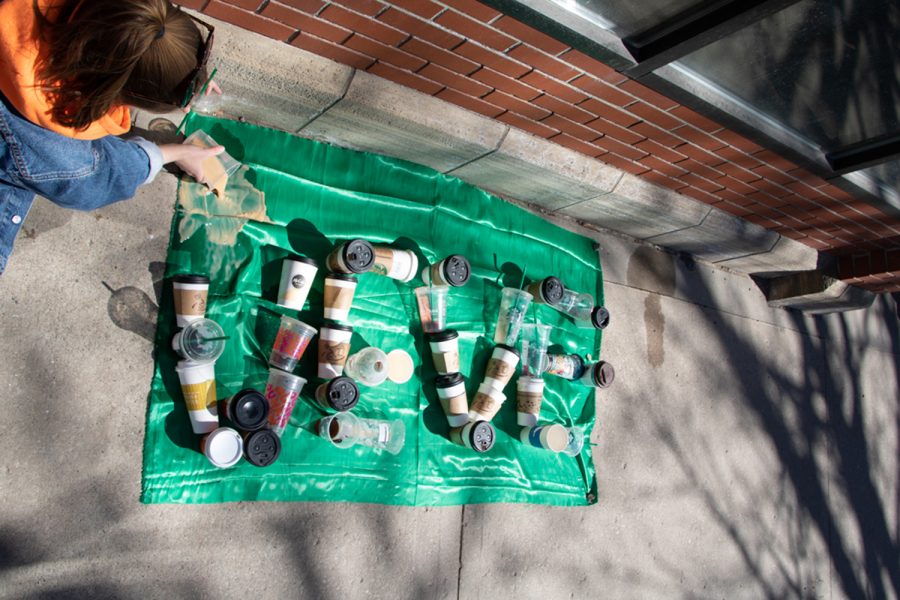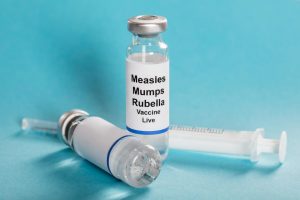University of Iowa students turn trash into powerful artwork
Using plastics from trash cans, backyards, and city streets, two graphic design students partnered to create artwork to send a message about our impact on the environment.
April 15, 2019
When Alexandria Gonzales and Natalie Petersen’s graphic-design class received an assignment to turn a simple phrase into artwork, they saw an opportunity to make their final product far more than an ordinary typography project.
The two University of Iowa second-year graphic-design students partnered and were immediately inspired by a quote by American computer scientist and Rear Adm. Grace Hopper: “The most dangerous phrase in our language is, ‘We’ve always done it this way.’ ”
Taking the second half of the quote, Gonzales and Petersen saw an opportunity to apply the phrase “We’ve always done it this way” to humans’ effect on the environment.
The students researched leading pollutants to decide what to use to assemble the words from the phrase. The message was spelled out in coffee cups, plastic grocery bags, straws, silverware, and pop bottles.
“A lot of the coffee cups were from Christmas still,” Petersen said. “They were all very dated things that kind of stick around.”
According to EcoWatch, Starbucks alone goes through 4 billion coffee cups in a year. While the cups are recyclable, most go end up in the landfill, according to the website.
The students collected most of their materials over spring break, starting by digging through trash cans on the Arts Campus. While at first the two thought finding the materials they needed to complete the project would be a challenge, both said it came as a surprise how easy it was to find trash.
“We have so much in Iowa City, Iowa,” Petersen said. “The amount that’s out where it matters, it’s awful.”
After break, Petersen and Gonzales hauled their project to different locations, assembling and taking pictures of each word to later compile in their graphic design.
RELATED: A sweet homecoming for artist alum who makes sculptures out of candy wrappers
“The coffee cups are in front of Starbucks, the straws are in front of McDonald’s, the plastic bags in front of Hy-Vee, the bottles in front of vending machines,” Gonzales said.
Gonzales said something that was sort of funny about the project is that once the two finished taking the pictures, everything they used went in recycling bins.
The finished result compiled all of the photos against an earth-toned background, something Gonzales said she wanted to include to provide contrast to the dingy appearance of the garbage. Around the pictures, the women added designs of sea creatures .
Blake Rupe, the program manager in the UI Office of Sustainability and the Environment, said the students’ project piqued her interest because of the message it sent.
“I am so intrigued by the fact that they are using items that someone purchased and used for maybe five minutes before discarding to tell this important story,” she said.
Rupe, who teaches a class on the effects of garbage on health, said she was impressed with the students’ passion for creating something that would raise awareness about important environmental issues.
“Every single action matters,” she said. “It may seem pointless to refuse a straw at a restaurant, but when 1 million people do, that it really adds up.”






